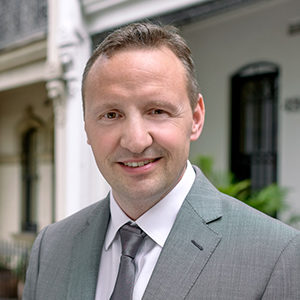Tenosynovitis Treatment and Trigger Finger Hand Surgery in Sydney by Plastic Surgeons
- Are you dealing with tenosynovitis?
- Have you tried conventional treatments for the trigger finger but nothing worked?
- Do you want to get trigger finger hand surgery?
If you have a trigger finger or stenosing tenosynovitis, you may know the intense pain that stems from a curled finger or a thumb. Aside from the pain, is the stress of not being able to perform day-to-day tasks like buttoning your shirt, pressing buttons or writing.
Typically, early treatment begins with over-the-counter drugs, certain exercises, and non-invasive treatments. However, sometimes surgery is necessary. Trigger finger surgery essentially increases the space for your flexor tendon to move.
Sydney Specialist Plastic Surgeons Dr Varun Harish and Dr Hari Alani perform hand surgery to help restore the function and appearance of your hand.
They perform a range of Skin Surgery in locations across Sydney, Southwest Sydney and Southern Highlands. The Pure Visage Plastic Surgery Clinic is located in Gregory Hills.
What is the Flexor Tendon ?
The flexor tendon is the tendon on your fingers and thumb that gets activated by your muscles. The purpose of the tendon is to connect muscles to the bones and is responsible to control actions such as running, grasping, jumping, and lifting. It sometimes causes your finger to bend and flex. After the surgery, the finger will be able to bend and straighten without causing excruciating pain.
Causes of Tenosynovitis
In most cases, the trigger finger is a result of an injury caused to the tendons, surrounding bone or the muscle. The injury isn’t just limited to athletes. Most people who get affected with Tenosynovitis are the ones who perform repetitive motion activities, typing, weeding etc. Carpenters, musicians, office workers, and dentists are surely at a higher risk. Some of the top causes include:
- Repetitive-stress activities
- Prolonged physical activities that involve your hand
- Sudden sprains and strain to your hand
- Underlying health conditions such as rheumatoid arthritis, scleroderma, gout, diabetes, reactive arthritis, gonorrhoea etc.
- Infection as a result of cut/puncture to the tendon
Pain and Tendon Inflammation
Before looking for effective treatments, you need to determine whether your pain is stemming from tendon inflammation or not. Certain tendons in your body are more susceptible to injuries such as hands, feet, and wrists. Inflammation is more common in these areas. Your pain might be linked to tendon inflammation if you are experiencing joint stiffness, joint swelling, joint pain, joint tenderness, and redness of the skin. Some patients also develop fever which is a result of underlying infection and calls for immediate attention.
Diagnosing Tendon Sheath Inflammation
In order to diagnose your condition, you will need to undergo a physical exam. Your doctor will check the affected area thoroughly for redness and swelling. The doctor might ask you to move the affected area which can be extremely painful. In some cases, an ultrasound and MRI scan might be required to confirm the diagnosis.
Ideal Candidates for Trigger Finger Hand Surgery
Your GP might recommend you undergo the trigger finger hand surgery if non-surgical treatments have failed to work for you in the past. Things like resting your hand for 3 to 4 weeks, wearing a splint, taking OTC non-steroidal anti-inflammatory medicines, steroid injections, etc. You might be the right candidate for the surgery if:
- Your finger or thumb can’t be properly used
- You have extreme pain in your fingers, hands, forearms or thumb
- You are unable to do daily tasks without experiencing pain
- You have trouble picking up things and grasping stuff
Preparing for the Trigger Finger Hand Surgery
It is important to be aware of the pre-op measures you need to take before undergoing the surgery. You will be required to fast for 12 to 24 hours before the surgery. Make sure to have dinner earlier based on the time the surgery is scheduled. You can drink water as normal. Stay clear of any other beverages though.
What to Expect from Trigger Hand Surgery Procedure
There are two different types of trigger finger hand procedures – open surgery and percutaneous surgery. Let’s discuss them briefly:
1. Open Surgery
This particular type of surgery is usually done on an outpatient basis and takes anywhere from a couple of minutes to half an hour. The procedure will begin by you receiving a mild sedative via an IV. It will help you relax through the process. Dr Kernohan will numb the area with the help of a local anaesthetic. Then a small incision is created in your arm that is in line with the impacted finger.
Dr Kernohan will cut the tendon sheath (which can impact the movement once it becomes rigid). He will move the impacted finger around to ensure smooth motion. Then, the incision is closed with sutures and topped off with bandages.
2. Percutaneous Release
This type of procedure is most commonly used for middle and ring fingers and does not involve any incisions. First, Dr Kernohan will numb your palm with the help of a local anaesthetic.
Once your palm is numbed, he will insert a solid surgical needle into the skin that impacts the affected tendon. Dr Kernohan will then move the needle and finger to break apart the blocked area and open the tendon sheath.
Recovery After Trigger Finger Hand Surgery
Once the numbness wears off, you will be able to move the affected finger on the day of the surgery. Expect to have a full range of motion on the very first day.
Based on the nature of your job, Dr Kernohan will advise you to take time off work. If you have a desk join, you might be able to join a day after surgery. If your job involves strenuous labour, you might be advised to take up to two weeks off from work. A certificate will be provided for time off work.
Recovery is different for every person. Here is a general timeline:
- You will be required to wear the bandage for 5 to 7 days post-surgery. Keep the wound clean and dry
- You will have a sore finger and palm for a couple of days. Use ice packs to make yourself feel comfortable
- Keep your hand propped up above your heart to help with swelling
- Do the hand movements/exercises which are recommended by the surgeon at home
- Stay clear of driving for a week or two based on Dr Kernohan’s instructions
- Do not indulge in any sports for three weeks or until you gain back your grip strength
Please note that it can take anywhere from three to six months for the swelling and stiffness to go away completely. Recovery is very personal. Some people recover quickly while others take a bit more time depending on the complexity of each case.
How Efficient Is the Trigger Finger Surgery?
The tendon sheath that is cut during the process of trigger finger hand surgery regrows but is less tense. It essentially gives the tendon room to move. In less than 3 % of cases patients will need more than one surgery. It is most common in people dealing with diabetes (most diabetic patients have more than one trigger finger).
Risks and Complications of Surgery
Typical surgical complications like infection, nerve injury, and bleeding are uncommon in trigger finger hand surgery.
Risks specific to trigger finger hand surgery include nerve damage, bowstringing, persistent triggering, and incomplete extension.
All in all, trigger finger hand surgery can correct the problem associated with tendon and sheath while restoring complete movement of the affected finger/s or thumb. Patients with diabetes have a higher chance of developing trigger fingers. This issue is also seen in people struggling with rheumatoid arthritis. In extreme cases, the surgery might not be able to straighten the finger completely.
FAQs about Trigger Finger Hand Surgery
Here is a list of frequently asked questions we get regarding trigger finger hand surgery:
What is the downside of trigger finger surgery?
- Generally speaking, it is considered to be a safe procedure with rarely any side effects. Possible risks include damage to nerves, scarring, and infection. Certain studies indicate that the success rate is lower in individuals struggling with diabetes.
How long after trigger finger surgery can I use my hand?
- It is important to avoid using your hand for at least 1 to 2 weeks after surgery or as indicated by your surgeon. Avoid lifting anything heavier than half to 1 kgs. Stay clear of repeated movements like typing, vacuuming, chopping, washing windows etc.
How long does trigger finger surgery take?
- It is a minor surgery that is usually done on an outpatient basis. On average, it takes about 20 minutes to an hour based on the technique used.
Is the surgery for the trigger finger painful?
- Dr Kernohan will use a local anaesthetic to numb your hand, so you won’t experience any pain during the procedure. Post-surgery, it is normal to experience a certain level of pain but it can be relieved with OTC drugs. You should be able to move your fingers and thumb immediately after the surgery.
Is surgery the best option for the trigger finger?
- Well, in some cases the problem can be cured with medication and physical exercise. If those fail to work, you may opt for hand surgery to treat the condition.
When can you take a shower after trigger finger surgery?
- You can shower almost immediately after the surgery. However, take special care to keep your wound dry for at least 5 to 7 days. Cover your hand with a plastic glove while taking a shower to ensure no water gets to your wound.
Do I have to wear a brace after trigger finger surgery?
- The treatment essentially depends on how severe your symptoms are. In some cases, Dr Kernohan will ask you to wear a splint or brace for a couple of weeks post-surgery to rest your hand. It is important to take a break from usual activities to allow your hand to recover.
How do you sleep after hand surgery?
- Regardless of the position you sleep in, it is important to keep your hand in an elevated position. Ideally, you should be lying flat on your back with your hand resting on a couple of pillows.
How long after hand surgery can I drive?
- Expect to resume driving and other light activities in 3 to 4 weeks after the surgery. When it comes to driving, Dr Kernohan might suggest you avoid it for 6 to 8 weeks.
Are you awake during trigger finger surgery?
- Yes, in most cases the surgery is performed under local anaesthesia and you will be awake through the procedure. Dr Kernohan will use a shot to numb your hand which will prevent any pain. In some cases, you will be given a medicine that will enable you to relax.
What is the success rate of trigger finger surgery?
- Surgical release of a trigger digit has a reported success rate of 65 to 97% with the need for repeated surgery in up to 3% of individuals.
For Further Reading and Medical References about Trigger Finger Treatment
- WebMD page on Trigger Finger Surgery
- Mayo Clinic Page on Trigger finger – Symptoms and causes
- Trigger finger – Overview


 Dr Varun Harish FRACS (Plas) – Plastic Surgeon
Dr Varun Harish FRACS (Plas) – Plastic Surgeon




